Triangle Girls of the First World War at Portsmouth Historic Dockyard are celebrated in new project
and live on Freeview channel 276
The Triangle Girls project has been put together by Portsmouth Royal Dockyard Historical Trust (PRDHT), a volunteer organisation that has over many years, documented the untold stories of the women who worked while men were away fighting.
At the start of the war in 1914, 50 women worked in the docks doing light duties like flag making. By the end of the war in 1918, over 2,000 women were in the dockyards working on the tools, alongside the men, welding, grinding, drilling, using laths and plate forming for the ships.
Advertisement
Hide AdAdvertisement
Hide AdThe project, which shines a spotlight on this work, was launched at Boathouse 4 at the historic dockyard.
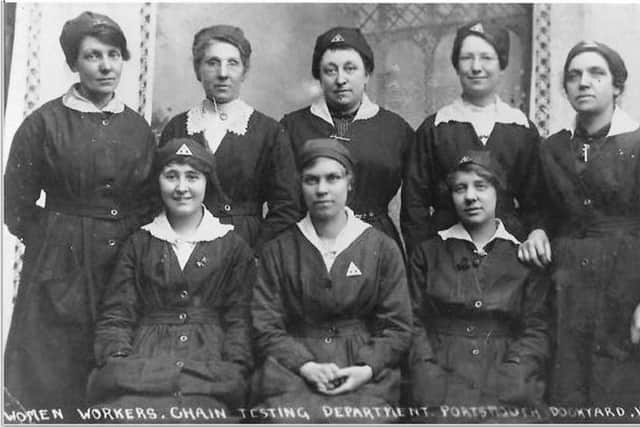

Hannah Prowse, CEO of Portsmouth Naval Base Property Trust and a trustee of PRDHT also sits on the UK ship building skills taskforce in Portsmouth to encourage people to come into the shipbuilding industry.
Mrs Prowse was ‘truly horrified’ by the statistic that in 105 years women working on the tools, in Portsmouth, had gone ‘backwards’ from 1919, women being eight per cent to five per cent of the workforce.
During the war in the dockyard the women were on equal pay to the men, and their pay went from £1 to 42/- shillings.
Advertisement
Hide AdAdvertisement
Hide AdShe praised the volunteers with their extraordinary work on such a small budget. The only way to realise this project was through the goodwill of the volunteer members and a National Lottery Heritage Fund grant of £7,500 fought for by Colin Lay, the originator of the project.
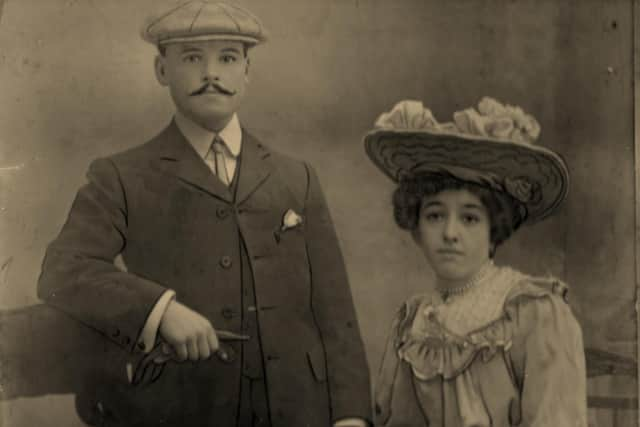

One of the relatives of the Triangle Girls, Cheryl Jewitt, 76, of Portsmouth joined the PRDHT as a volunteer, in 2018 when Colin Lay was just starting his research about the female dockyard workers. Her family is deeply rooted in Portsmouth going back to HMS Victory in the 1800s.
She says: ‘There is so much history in this dockyard that I was unaware of. The trust works hard to preserve the history of the dockyards as opposed to the shipping and everything else the dockyard is famous for.’
The rate books, listing the rates of pay of all the people who came to work in the dockyards were computerised which enabled Mrs Jewitt to find her grandmother, Clara Eliza Sillence by name.
Advertisement
Hide AdAdvertisement
Hide AdHer grandmother’s first husband, James A W Sillence went off to fight and was killed in October 1914 leaving their small child and Clara a widow.
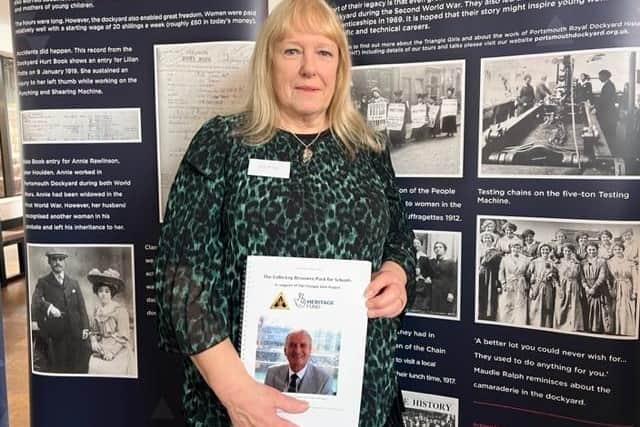

Mr Jewitt’s grandparents met in the dockyard where Clara went to work in 1917 but never spoke about it. She says: ‘The men who stayed behind in the dockyards were highly skilled.
‘Imagine being a young woman walking through those dockyard gates with those hundreds, thousands of men, it must have been very frightening, quite intimidating. Everybody knows about the munition factories but very few know about the work the women had to do in the dockyards. I am very proud of her.’
‘You could only be employed here if you were a widow or had a relative already working in the docks,’ says Ian Barberry, fellow volunteer and co-presenter of talks to WI and U3As with Mrs Jewitt.
Advertisement
Hide AdAdvertisement
Hide AdThe women who proudly wore the badge, ‘On War Service’ in the dockyards got kicked out by an act of parliament to enable the men coming back from the front to have jobs.
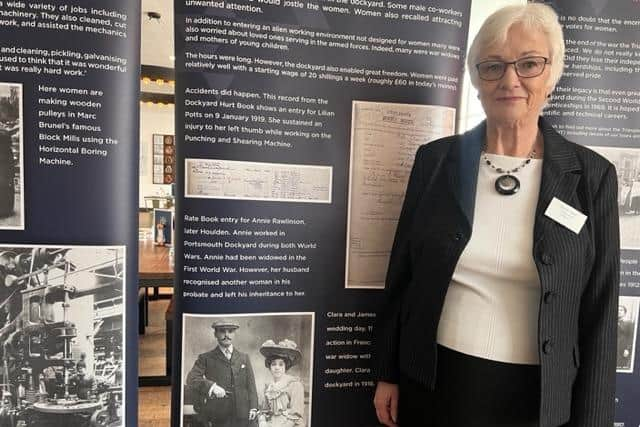

The Restoration of Pre-War Practices Act 1919, saw those women jobless and some destitute with perhaps children or wounded husbands to look after.
As one of the 90-year-old survivors from that time, interviewed in 1970’s said when she was asked if she had been given a medal, ‘No just our cards.’ Cards being the official termination
document given to those whose services are no longer needed with no severance or pension.
Advertisement
Hide AdAdvertisement
Hide AdThe Triangle Girls Project was started when the late Colin Lay, who had retired and volunteered with the PRDHT in the dockyards, found the rate books.
His widow, Sharon Lay, 75, of Havant, is fourth generation dockyards workers said it all started when her late husband found her family listed in the logs.
She said, ‘It was then that he realised there was a wealth of local history, that the population didn’t know was there. He wanted to give it back to the community really and make them aware of what history they had on their doorstep.’
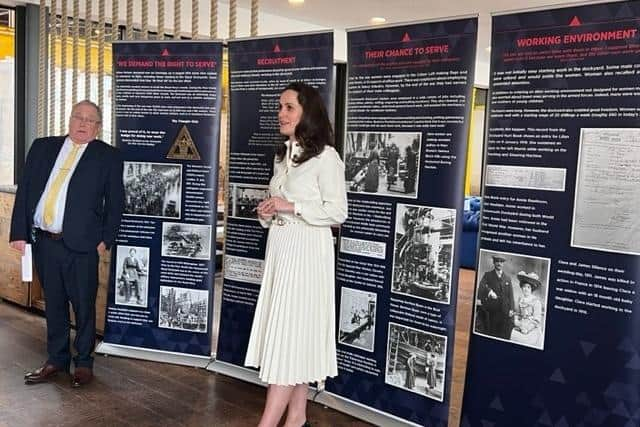

‘It was his passion, his baby. All the time he was ill, having chemotherapy, he was even laying out the pictures to go to the printers. He worked hard, wanting to see it right through.’
Advertisement
Hide AdAdvertisement
Hide AdHe was ‘dedicated, determined, and detailed’ wanting to shed a light on this piece of local history.
Sharon says: ‘I hope It will be used by schools. He didn’t want it to be prescriptive. He wanted all the information there so that all the key stages could use it as they want.
‘A colleague of mine who was an infant schoolteacher, did a dummy run with her six-year-olds. They only used a bit of it, for a topic on strong women using Clara’s story. She said they were very interested in the clothes and the uniforms.
‘It can be used for teaching at primary school to A-levels as it contains the finer details and would also tie in the suffragette movement,’ says Mrs Lay.
Advertisement
Hide AdAdvertisement
Hide AdThe intention is to take the mobile display of The Triangle Girls project into schools and libraries with ‘The Colin Lay Resource Pack for Schools’ online from the Trust. It consists of photographs, information, banners, documentation, and artefacts.
Portsmouth Royal Dockyard Historical Trust (PRDHT)